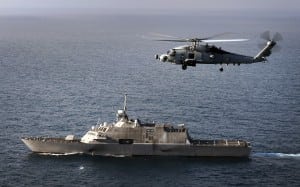
The Senate Armed Services Committee’s markup of its FY ’19 defense authorization bill does not allow additional Littoral Combat Ships (LCS) or authorize CVN-81 ahead of reports on a two-carrier buy like its House-passed counterpart.The House’s National Defense Authorization Act (NDAA) authorized spending $1.6 billion to procure three LCSs, an increase of $950 million over the administration’s request of $646 million for just one to finish the program as planned (Defense Daily, April 25).The Navy plans to transition to the…

 By
By 











